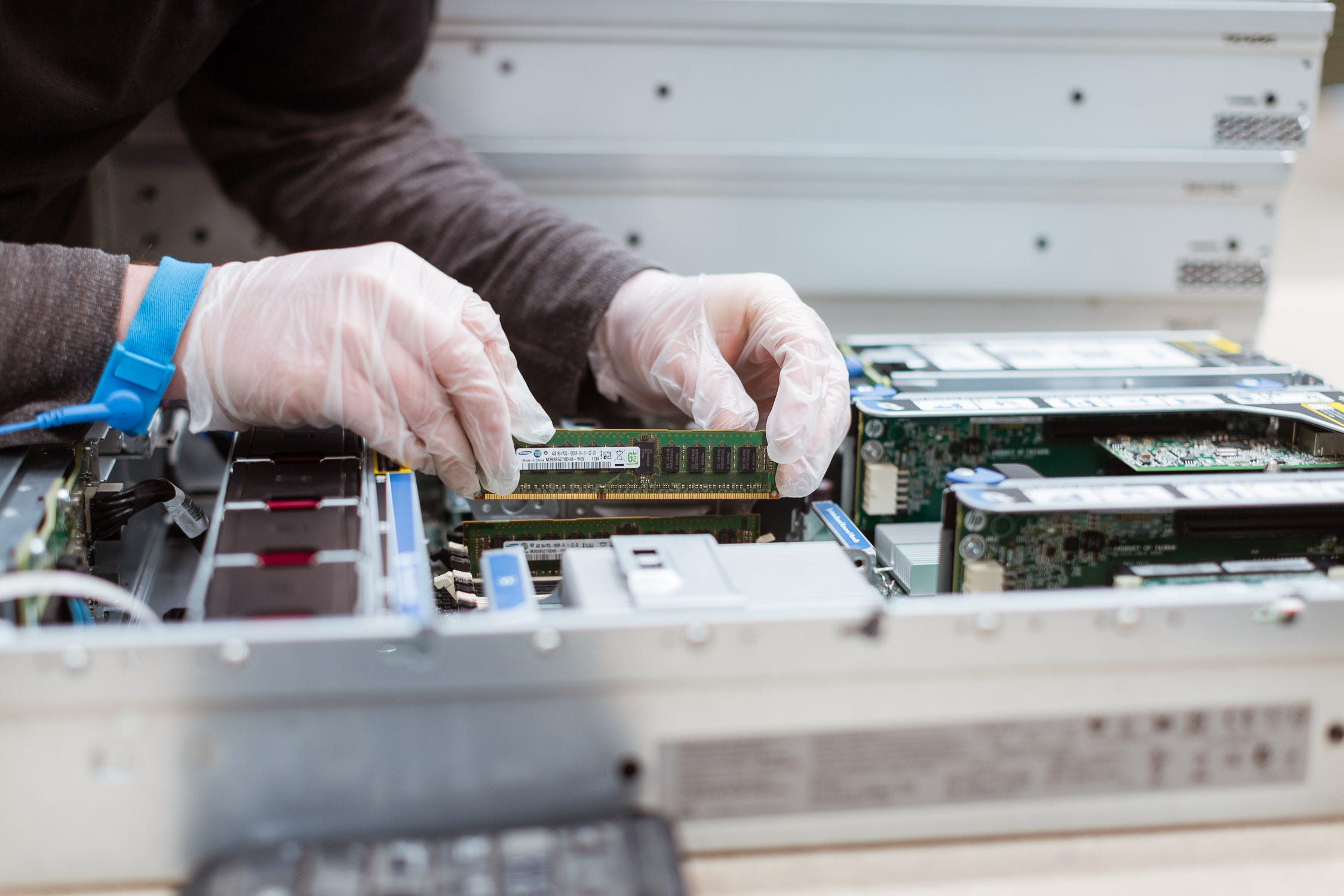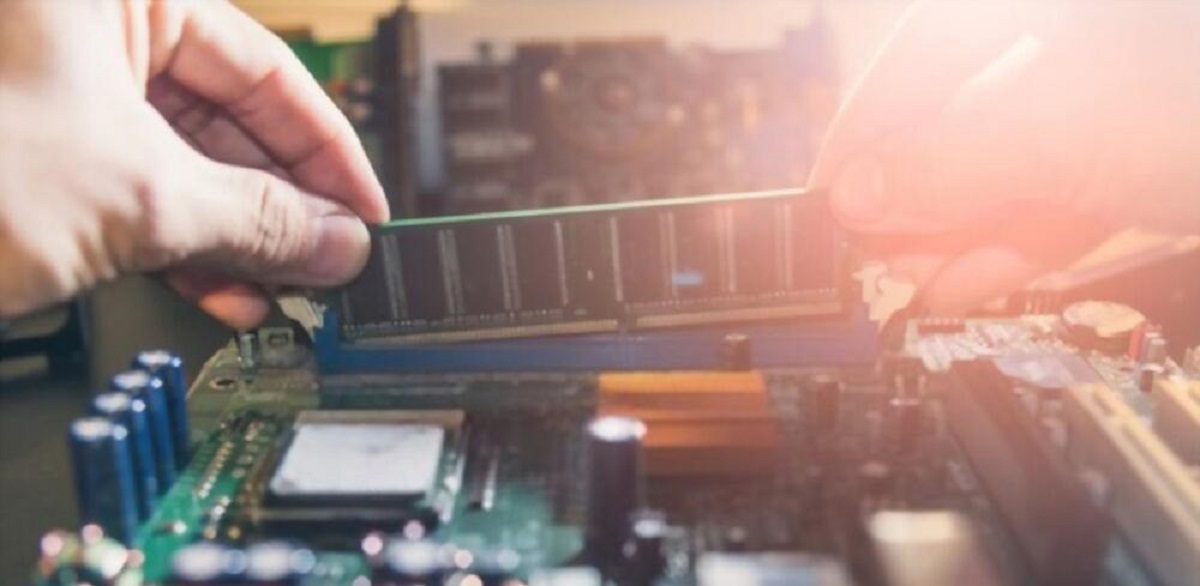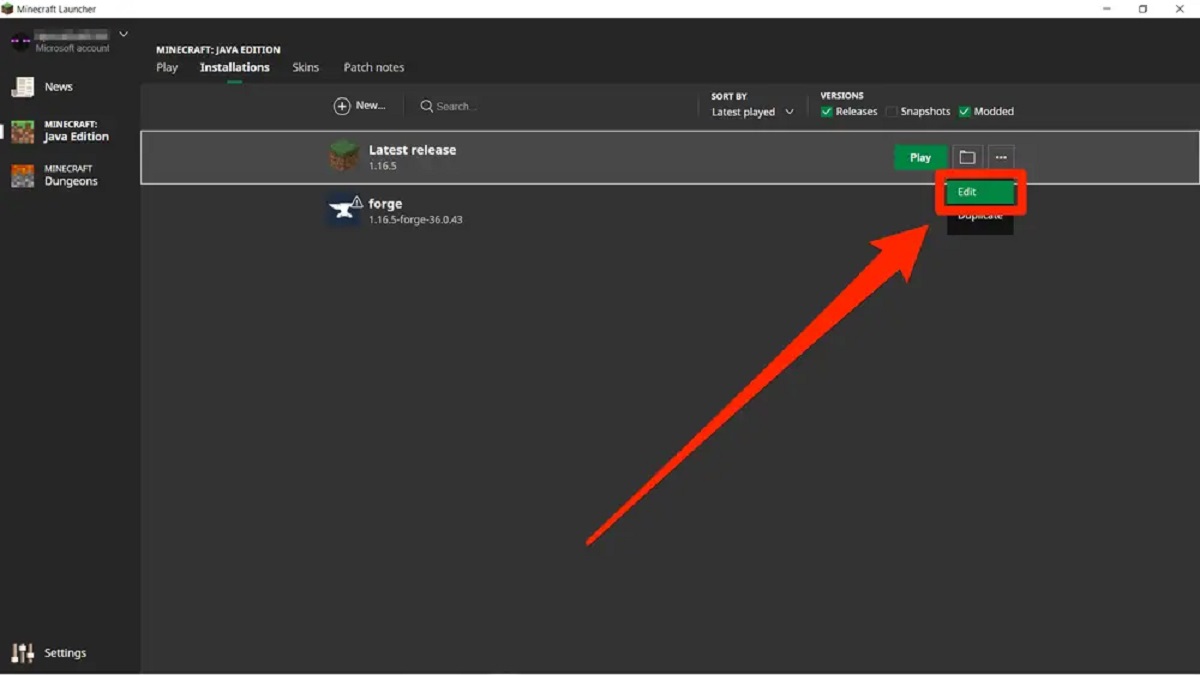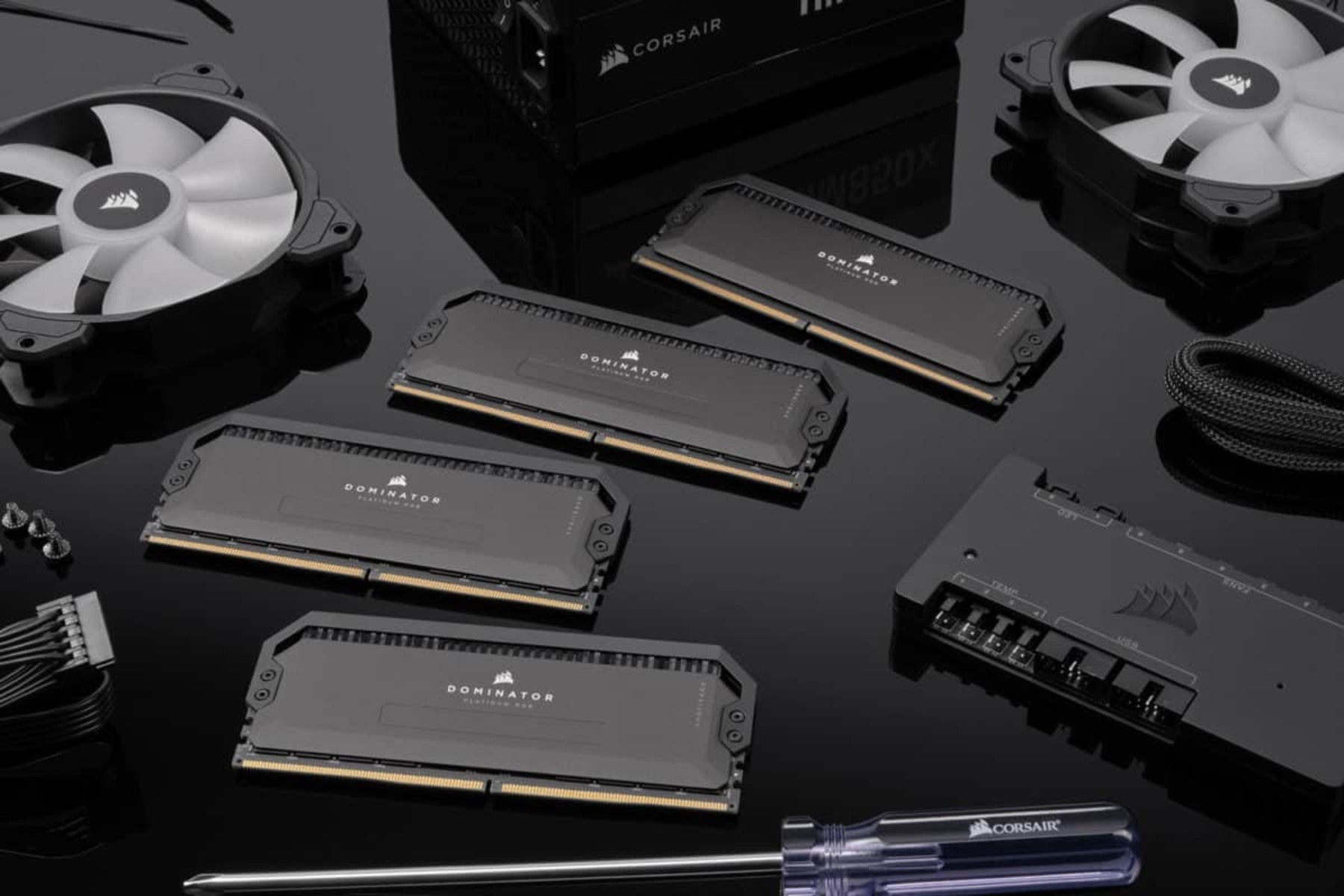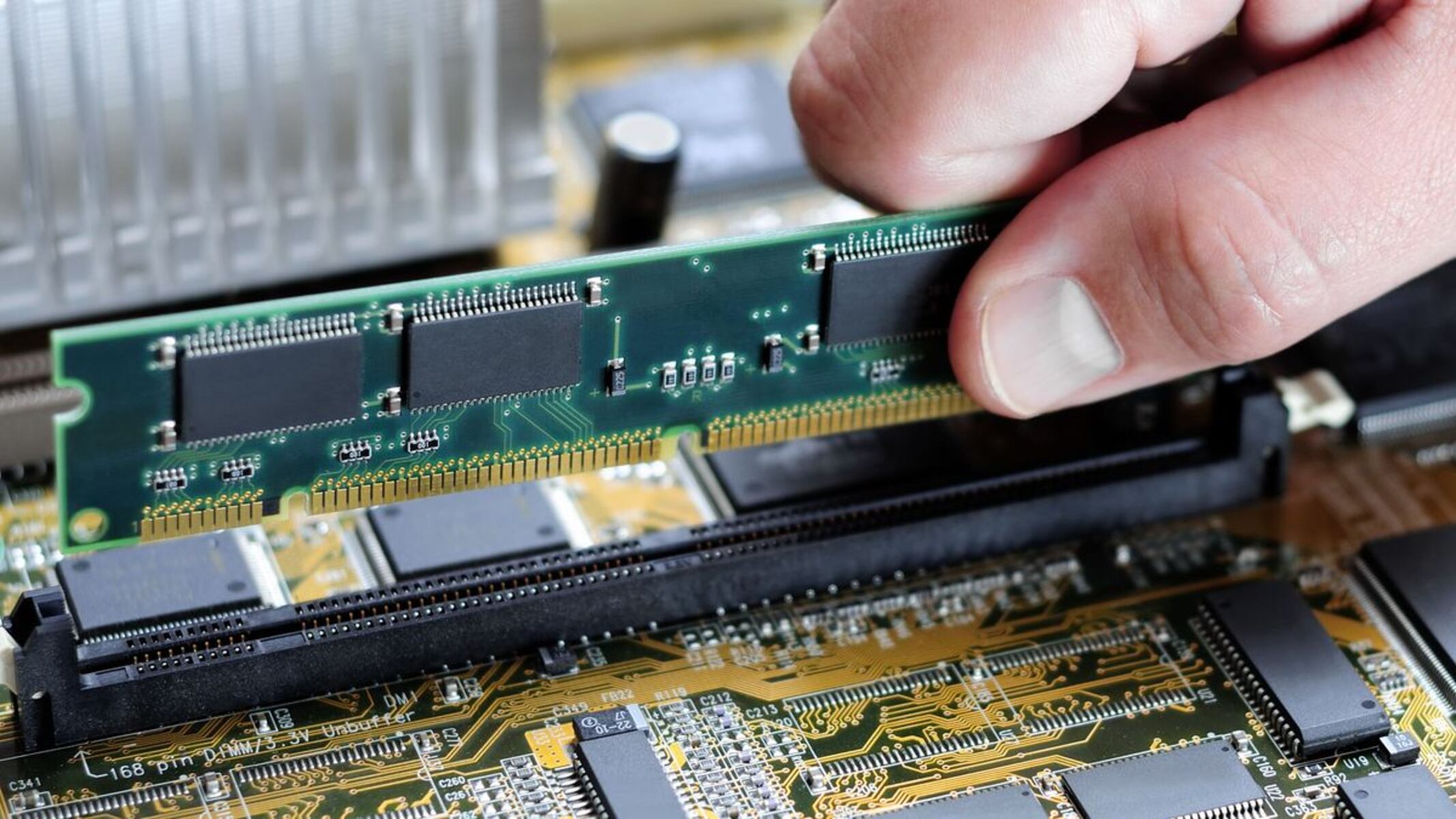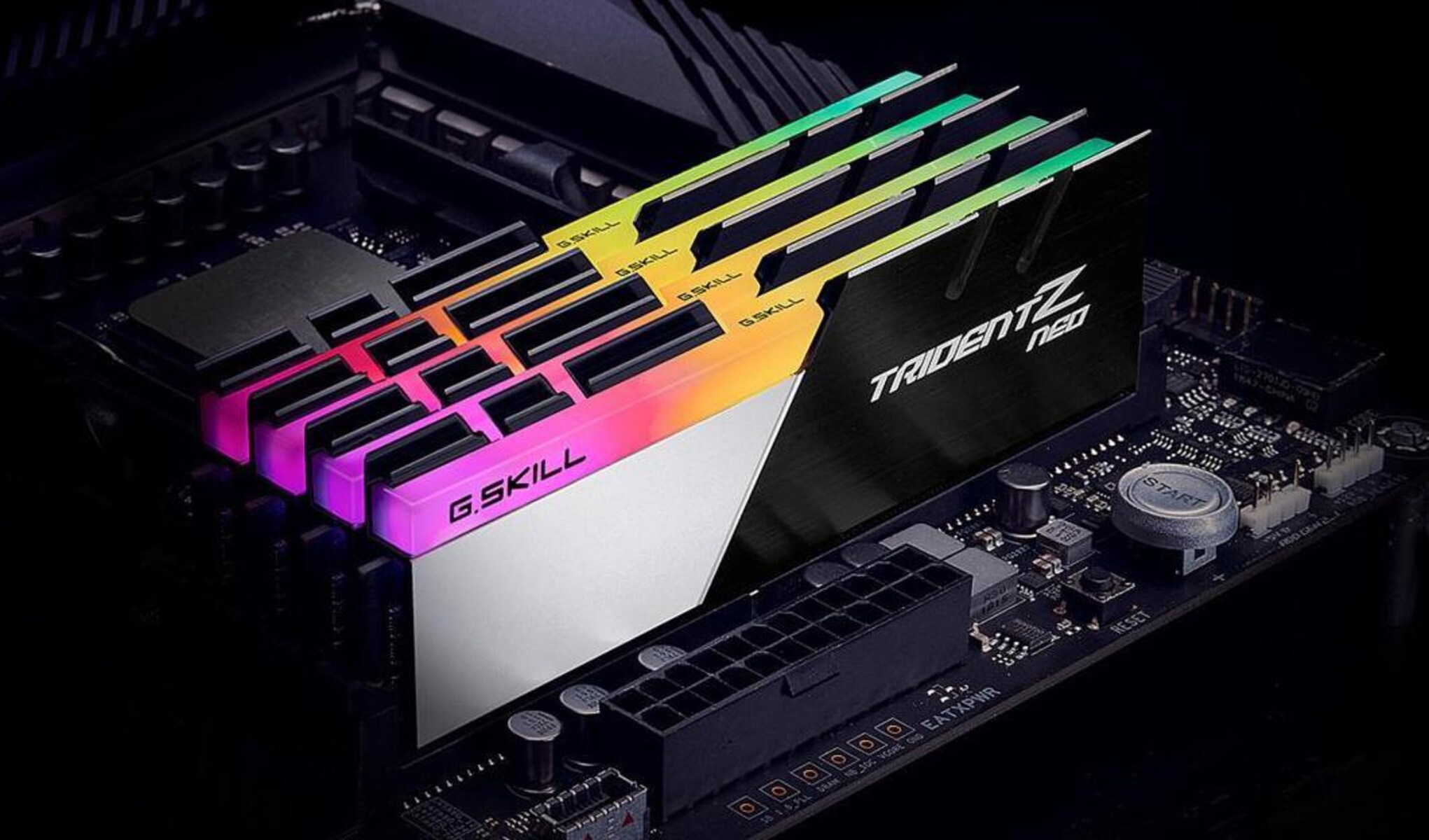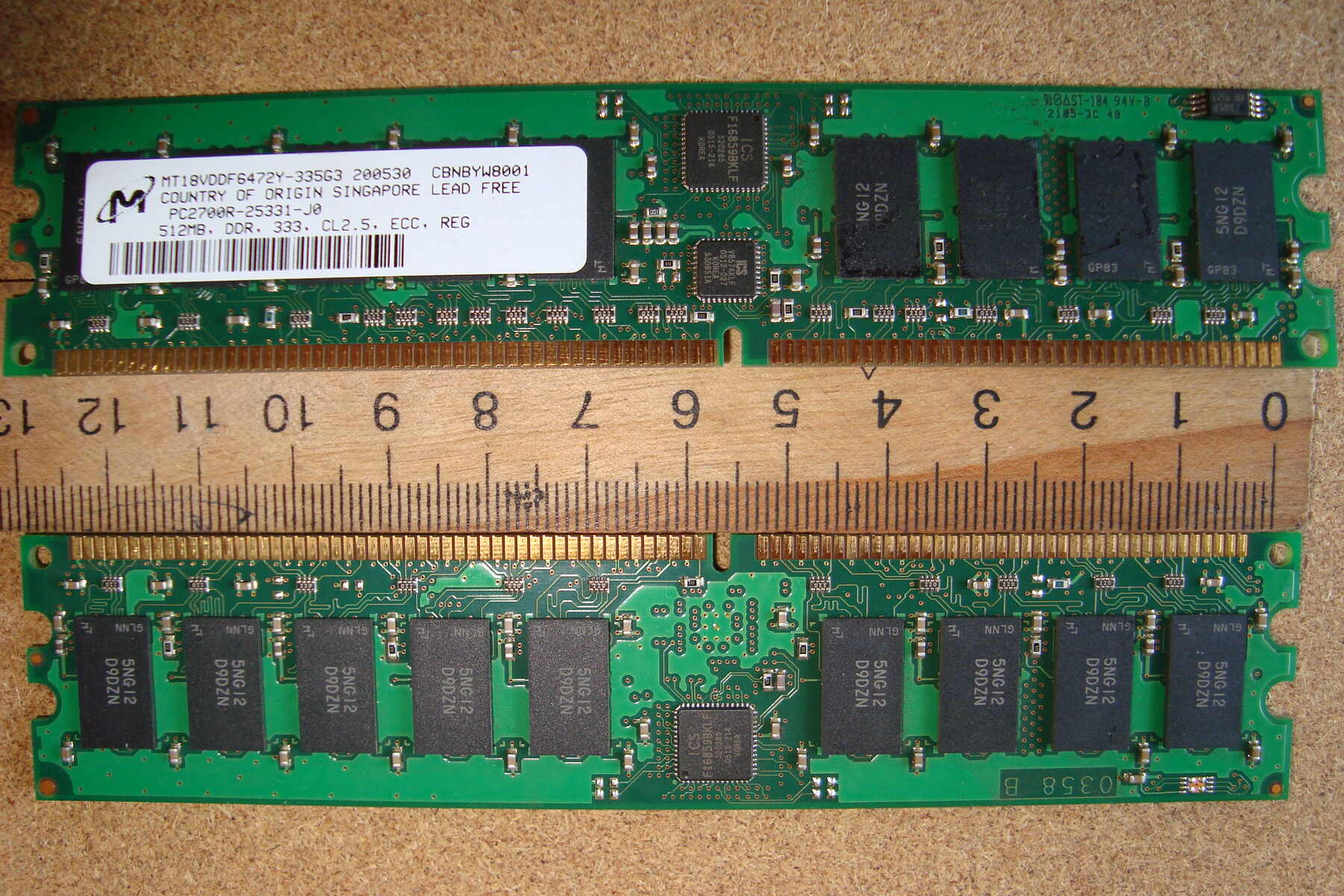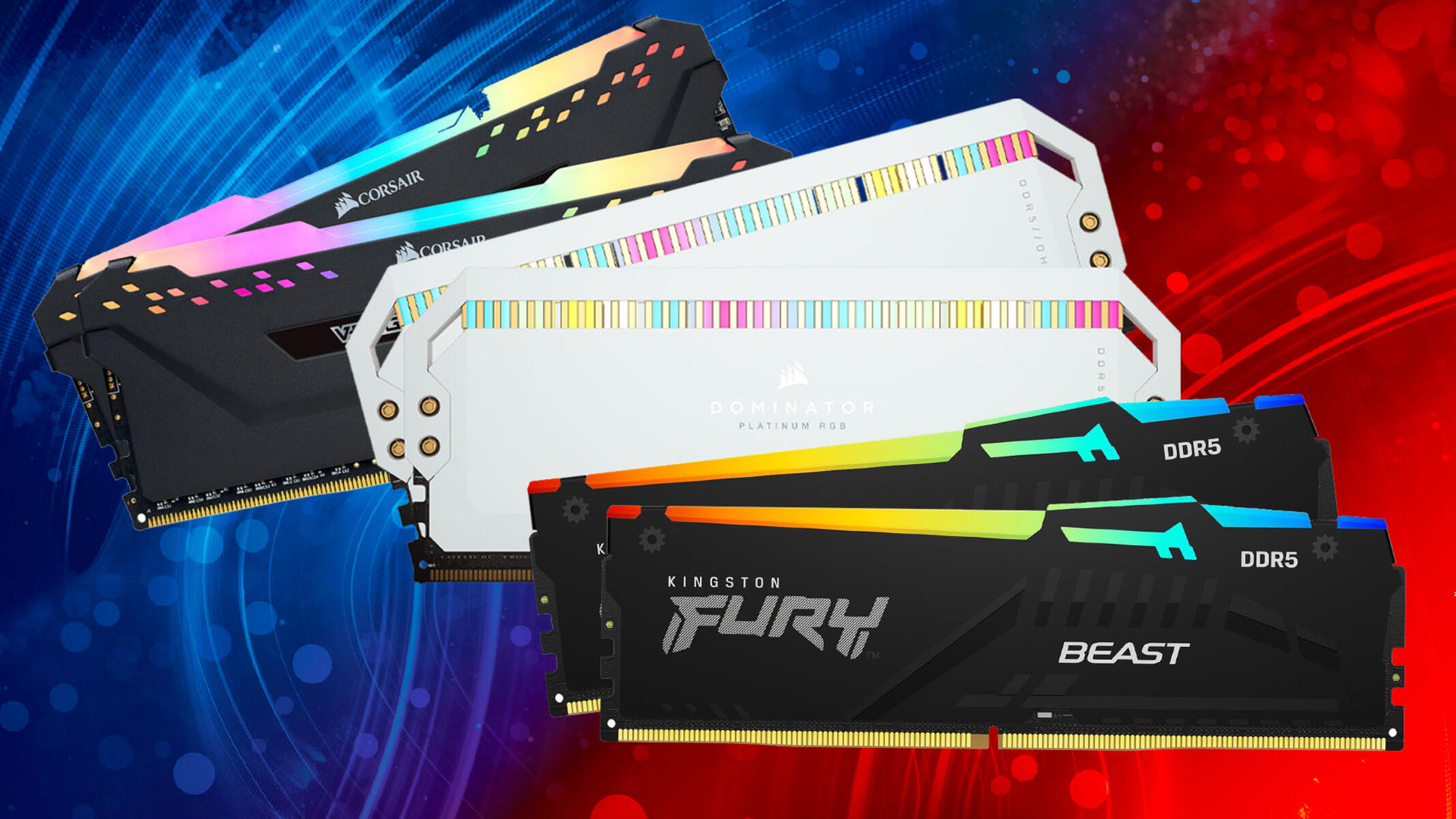Introduction
Welcome to our guide on determining the amount of RAM needed for a server. RAM, or Random Access Memory, plays a crucial role in the performance and efficiency of a server. It is responsible for storing and quickly accessing data that is actively being used by the server’s operating system and running applications.
When it comes to determining the appropriate amount of RAM for a server, there are several factors to consider. These include the server’s intended purpose, the operating system being used, the number of concurrent users or processes, and the specific applications or services running on the server.
Having an adequate amount of RAM is essential to ensure smooth and efficient server performance. Insufficient RAM can lead to slow response times, lag, and even crashes, particularly when the server is under heavy load. On the other hand, having too much RAM might be unnecessary and could result in wasted resources and higher costs.
In this guide, we will explore the various factors to consider when determining the RAM needs for a server. We will also discuss the minimum RAM requirements for different types of servers and provide recommended RAM configurations for specific server functions. Additionally, we will cover how to identify and diagnose RAM shortages in a server, as well as the steps involved in upgrading the RAM. Finally, we will share some best practices for optimizing RAM usage to maximize server performance.
By the end of this article, you will have a better understanding of how much RAM your server needs and how to optimize its performance. So, let’s dive in and explore the world of server RAM requirements!
Factors to Consider When Determining RAM Needs for a Server
When determining the amount of RAM needed for a server, there are several key factors that need to be taken into consideration. By understanding these factors, you can ensure that your server has enough RAM to handle its workload efficiently. Here are the factors to consider:
1. Server’s Intended Purpose: The purpose of the server plays a crucial role in determining its RAM needs. A server used for simple file storage or basic web hosting will require less RAM compared to a database server or a virtualization host that handles multiple virtual machines.
2. Operating System: Different operating systems have varying RAM requirements. For example, a server running a lightweight Linux distribution will require less RAM compared to a server running a resource-intensive Windows Server operating system.
3. Number of Concurrent Users or Processes: The number of users or processes accessing the server simultaneously affects the RAM requirements. More concurrent users or processes will require additional RAM to accommodate their demands and prevent slowdowns.
4. Types of Applications or Services: The nature of the applications or services running on the server also influences the RAM needs. Resource-intensive applications like databases, content management systems, or virtual machines will require more RAM to ensure smooth operation.
5. Expected Data Load: If your server handles large datasets or performs complex calculations, it will require more RAM to store and process the data effectively. Analyzing the expected data load will help determine the appropriate amount of RAM.
6. Future Scalability: It is essential to consider future growth and scalability when deciding the RAM needs of a server. If you anticipate a significant increase in user traffic or workload, it is wise to choose a higher RAM capacity to accommodate future expansion.
7. Budget Constraints: Finally, take into account your budget limitations. While you want to ensure sufficient RAM for optimal performance, it is important to balance the cost of RAM modules with the benefits they will bring to your server.
By considering these factors, you can make an informed decision about the amount of RAM your server needs. It is always recommended to consult with experts or refer to the system requirements provided by the server software or operating system vendor to ensure accurate RAM allocation.
Minimum RAM Requirements for Different Types of Servers
Each type of server has its own minimum RAM requirements to ensure smooth operation and optimal performance. The following are general guidelines for the minimum RAM needed for different types of servers:
1. Web Server: A basic web server that hosts static webpages or serves low-traffic websites can typically function well with 2GB to 4GB of RAM. However, if the server is hosting dynamic websites or experiences high traffic, a minimum of 8GB to 16GB of RAM is recommended to handle the increased workload.
2. Database Server: Database servers, especially those running popular database management systems like MySQL or PostgreSQL, require substantial RAM to handle data processing and retrieval efficiently. As a general rule of thumb, a minimum of 16GB to 32GB of RAM is recommended for small to mid-sized database servers. Large-scale enterprise databases may require even more RAM, depending on the volume and complexity of the data.
3. Virtualization Host: When running virtual machines (VMs), the host server needs substantial RAM to allocate resources to each VM. The minimum RAM requirements for a virtualization host typically start at 32GB and can increase based on the number and resource needs of the virtual machines.
4. Mail Server: The RAM requirements for a mail server depend on the number of users, the size of their mailboxes, and the expected email traffic. For a small mail server serving a few mailboxes, 4GB to 8GB of RAM will suffice. However, if the mail server handles a large number of users or heavy email traffic, a minimum of 16GB of RAM is recommended.
5. File Server: File servers mainly handle file storage and sharing, requiring minimal RAM compared to other server types. A file server can operate efficiently with 4GB to 8GB of RAM, depending on the size and number of files being stored.
6. Application Server: The RAM requirements for application servers can vary greatly depending on the complexity and resource needs of the applications being hosted. Small to mid-sized application servers typically require a minimum of 8GB to 16GB of RAM, while larger enterprise application servers may need 32GB or more.
7. Game Server: Game servers hosting multiplayer games typically have high RAM requirements to handle multiple players, game resources, and real-time interactions. The minimum RAM for a game server can range from 8GB for small games to 32GB or more for large-scale multiplayer games.
It is important to note that these are general minimum requirements, and the actual RAM needed for each server may vary depending on factors such as the operating system, specific software being used, and the workload it handles. Always refer to the system requirements provided by the server software vendor for accurate RAM allocation.
Recommended RAM Configurations for Specific Server Functions
Optimizing RAM allocation for specific server functions can significantly improve performance and ensure efficient operation. While the recommended RAM configurations may vary depending on specific requirements, the following are general guidelines for common server functions:
1. Basic Web Server: For a basic web server that hosts low-traffic websites or static content, a recommended RAM configuration is 4GB to 8GB. This amount is sufficient to handle incoming requests, process scripts, and serve webpages without significant delays.
2. Database Server: Database servers require substantial RAM to handle data processing and caching. For small to mid-sized databases, a recommended RAM configuration is 16GB to 32GB. Larger databases or high-traffic environments may require 64GB or more for optimal performance.
3. Virtualization Host: When running virtual machines, the RAM requirements depend on the number and resource needs of the VMs. A recommended RAM configuration for a virtualization host is 32GB to 64GB, allowing for efficient allocation of resources to each VM without causing performance bottlenecks.
4. Mail Server: To handle email traffic efficiently, it is recommended to allocate a minimum of 8GB to 16GB of RAM for a mail server. This amount of RAM allows for efficient processing of incoming and outgoing emails, as well as handling various mail server tasks.
5. File Server: For a file server that primarily handles file storage and sharing, a recommended RAM configuration is 4GB to 8GB. This amount of RAM is sufficient to handle file operations and provide quick access to stored files for users.
6. Application Server: The recommended RAM configuration for an application server depends on the complexity and resource needs of the applications being hosted. A good starting point is 8GB to 16GB of RAM, which can be increased to 32GB or more for larger-scale enterprise applications.
7. Game Server: Game servers hosting multiplayer games require substantial RAM to handle multiple players and real-time interactions. A recommended RAM configuration for a game server is 16GB to 32GB, providing the necessary resources for smooth gameplay and minimizing latency issues.
Remember, these are general recommendations, and the actual RAM configuration for specific server functions may vary based on factors such as the operating system, software being used, and the expected workload. Always refer to the system requirements provided by the server software vendor for accurate RAM configuration.
How to Identify and Diagnose RAM Shortage in a Server
Identifying and diagnosing a RAM shortage is crucial to maintain optimal server performance. Running low on RAM can lead to slow response times, sluggish performance, and even server crashes. Here are some steps to help identify and diagnose RAM shortage in a server:
1. Monitor Resource Usage: Use server monitoring tools to track resource usage, including CPU, RAM, and disk utilization. Observe if the RAM usage consistently remains high or approaches its maximum capacity, indicating a potential RAM shortage.
2. Check Operating System Logs: Check the system logs of your server’s operating system for any indication of low memory. Look for error messages related to memory allocation or out of memory conditions.
3. Measure Page File or Swap Space Usage: Page file or swap space is virtual memory used by the operating system when it runs out of physical RAM. If the page file or swap space is consistently high or increasing rapidly, it may indicate a RAM shortage.
4. Use Diagnostic Tools: There are several diagnostic tools available to help identify and analyze RAM-related issues. Tools like Memtest86 can help detect memory errors or hardware issues that may be affecting the server’s RAM.
5. Conduct Stress Testing: Perform stress tests on your server to put it under a heavy workload and observe its performance. If the server becomes unresponsive, slows down significantly, or experiences frequent crashes under load, it could be a sign of insufficient RAM.
6. Analyze Application Performance: Examine the performance of applications running on the server. If applications are slow, experiencing delays, or crashing frequently, it could indicate that RAM is being exceeded, causing performance degradation.
7. Consult Server Monitoring Reports: Review server monitoring reports to identify patterns or trends in RAM usage over time. If you notice consistently high RAM usage or gradual increase in usage, it may suggest a need for additional RAM.
8. Seek Professional Assistance: If you are unsure about diagnosing RAM shortages or resolving performance issues, consider consulting an IT professional or server administrator who can analyze the server’s configuration and provide tailored recommendations.
By employing these methods, you can identify and diagnose RAM shortages in your server. Once you have confirmed a RAM shortage, you can take the necessary steps to address the issue and improve the server’s performance.
Upgrading RAM in a Server
Upgrading RAM in a server is a common solution to address performance issues and ensure optimal functionality. Increasing the amount of RAM can improve the server’s ability to handle resource-intensive tasks and accommodate growing workloads. Here are the steps involved in upgrading RAM in a server:
1. Identify Compatible RAM: Determine the type, speed, and capacity of RAM modules that are compatible with your server. Refer to the server’s documentation or consult with its manufacturer to ensure you choose the right RAM modules.
2. Power Off and Disconnect: Before proceeding with the RAM upgrade, power off the server and disconnect it from the power source. This ensures safety and prevents any damage to the hardware components.
3. Remove Server Cover: Open the server cover to gain access to the internal components. Depending on the server model, this might involve unscrewing or sliding off the cover.
4. Locate RAM Slots: Locate the RAM slots on the server’s motherboard. These slots are designed to hold the RAM modules securely in place.
5. Remove Existing RAM: If there are existing RAM modules, carefully remove them by pressing the release clips on each side of the module. Gently pull the module out of the slot at a straight angle.
6. Insert New RAM: Take the new RAM module and align it with the slot correctly. Firmly press the module into the slot until you hear a click, indicating that it is securely in place. Repeat this step for each additional RAM module.
7. Power On and Test: Close the server cover, reconnect it to the power source, and power on the server. The system should automatically detect the newly installed RAM. Check the server’s BIOS or operating system to ensure that the RAM has been recognized and is functioning correctly.
8. Verify RAM Capacity: After the server has booted up, verify that the RAM capacity has increased according to the newly installed modules. This can be done through the server’s operating system or by using system monitoring tools.
9. Perform Stress Testing: To ensure the stability and performance of the upgraded server, conduct stress tests to put it under heavy load. Monitor the server’s performance, specifically its RAM utilization, to ensure that the upgrade has successfully resolved any performance issues.
10. Record and Document: Keep a record of the RAM upgrade, including the model, speed, and capacity of the new RAM modules. This information will be useful for future reference or troubleshooting.
Always ensure that you follow proper safety protocols and consult the server’s documentation or seek professional assistance if you are unsure about the upgrading process. By upgrading the RAM in your server, you can enhance its performance and effectively meet the demands of your applications and services.
Best Practices for Optimizing RAM Usage on a Server
Optimizing RAM usage is essential for maximizing the performance and efficiency of a server. By following best practices, you can ensure that your server’s RAM is utilized effectively and efficiently. Here are some recommended practices for optimizing RAM usage:
1. Monitor RAM Usage: Regularly monitor the server’s RAM usage using system monitoring tools. This allows you to identify patterns, spot trends, and proactively address any potential RAM-related issues.
2. Close Unnecessary Processes: Identify and close any unnecessary processes or applications running on the server, especially those that consume a significant amount of RAM. This helps free up resources and prevents unnecessary RAM usage.
3. Manage Memory-Intensive Services: If your server runs memory-intensive services, such as databases or virtual machines, optimize their configuration to efficiently use available RAM. Configure buffer and cache sizes appropriately to prevent excessive memory usage.
4. Use Lightweight Applications: Whenever possible, opt for lightweight applications or software solutions that require less RAM. These applications consume fewer resources and prevent unnecessary strain on the server’s RAM.
5. Optimize Virtual Memory: Adjust the virtual memory settings of the server to optimize RAM usage. Configure the page file or swap space to ensure that it complements the available RAM, allowing the operating system to efficiently manage memory allocation.
6. Limit Concurrent User Connections: If your server experiences high user traffic, consider limiting the number of concurrent user connections to prevent excessive RAM usage. Setting maximum connection limits helps distribute resources evenly and prevents overload.
7. Implement Caching Mechanisms: Utilize caching mechanisms, such as content caching or database query caching, to reduce the need for frequent disk access and restrict unnecessary RAM usage. Caching data in memory allows for faster retrieval and reduces the strain on the server’s resources.
8. Regularly Update and Patch: Keep your server’s operating system and software up to date with the latest patches and updates. This ensures optimal performance, maximizes RAM efficiency, and resolves any memory-related bugs or issues.
9. Implement Load Balancing: If your server handles a high volume of requests, consider implementing load balancing techniques to distribute the workload among multiple servers. This reduces the strain on individual servers and optimizes RAM usage.
10. Regularly Optimize and Maintain: Regularly optimize and maintain your server’s configuration, including RAM settings and resource allocation. Periodically review and fine-tune the server’s configuration to ensure efficient RAM usage.
By following these best practices, you can optimize the usage of RAM on your server, improve performance, and ensure that your server can handle the demands of its workload effectively.
Conclusion
Properly determining and configuring the RAM for a server is crucial for optimal performance and efficiency. By considering the server’s intended purpose, operating system requirements, concurrent users/processes, and specific applications or services, you can ensure that your server has enough RAM to handle its workload effectively. Additionally, monitoring resource usage, diagnosing RAM shortages, and upgrading RAM as needed contribute to maintaining peak server performance.
For different types of servers, such as web servers, database servers, virtualization hosts, mail servers, file servers, application servers, and game servers, there are recommended minimum RAM requirements that provide a baseline for adequate performance. However, depending on specific factors unique to your server and workload, it may be necessary to adjust these recommendations to suit your requirements.
Optimizing RAM usage entails following best practices such as monitoring RAM usage, closing unnecessary processes, managing memory-intensive services, using lightweight applications, optimizing virtual memory settings, limiting concurrent user connections, implementing caching mechanisms, regularly updating and patching, implementing load balancing, and regularly optimizing and maintaining the server configuration. These practices help maximize the available RAM, prevent unnecessary strain, and ensure efficient resource utilization.
By carefully considering and addressing RAM needs, diagnosing shortages, and optimizing RAM usage, you can enhance your server’s performance, stability, and scalability. It is important to regularly evaluate the server’s resource requirements and make adjustments as necessary to accommodate growth and changing workload demands.
Remember, the amount of RAM needed for a server is not one-size-fits-all and may vary based on multiple factors. It is always recommended to consult with experts, refer to system requirements, and consider the specific needs of your server to ensure optimal RAM allocation and utilization.







